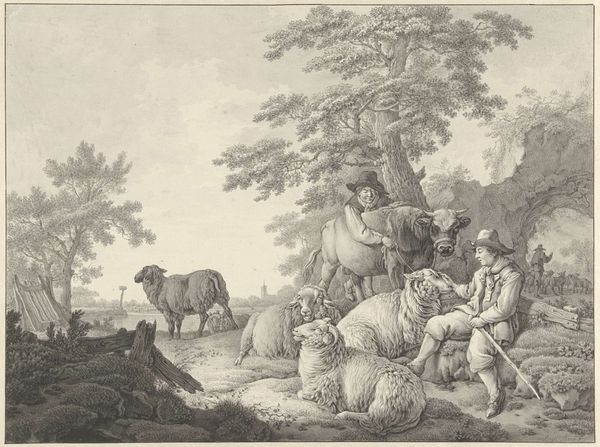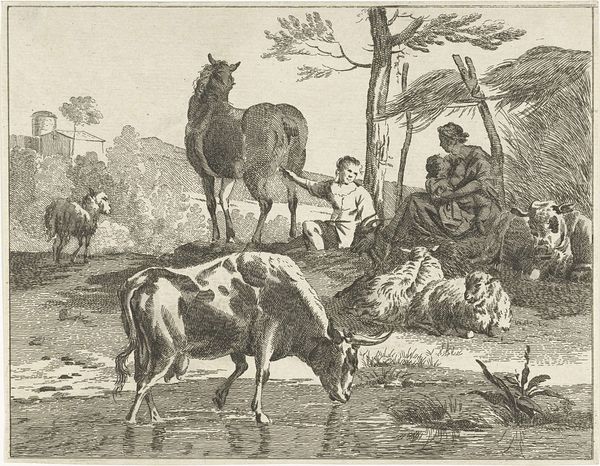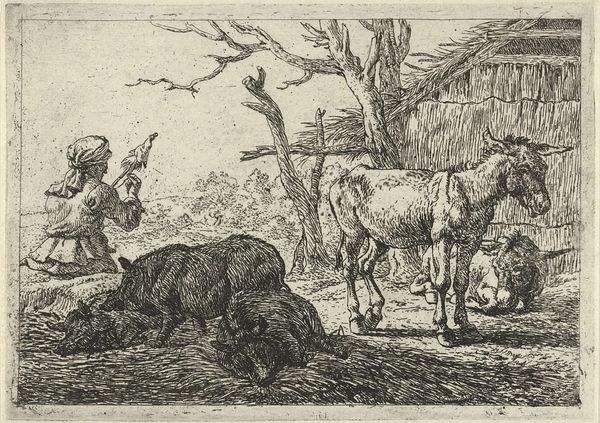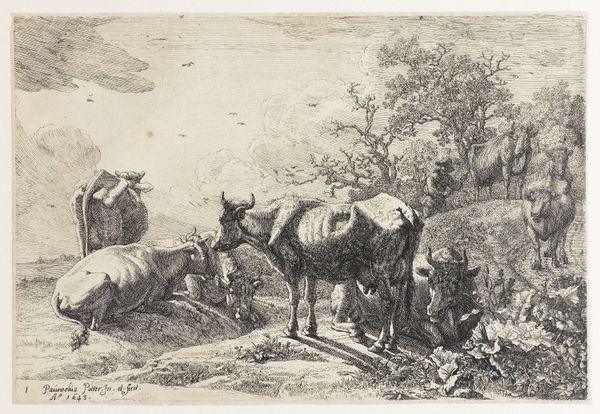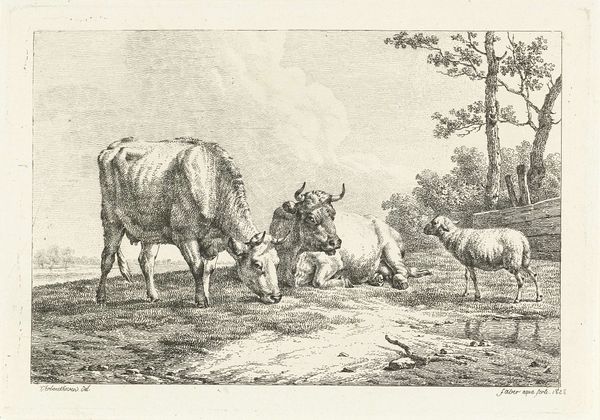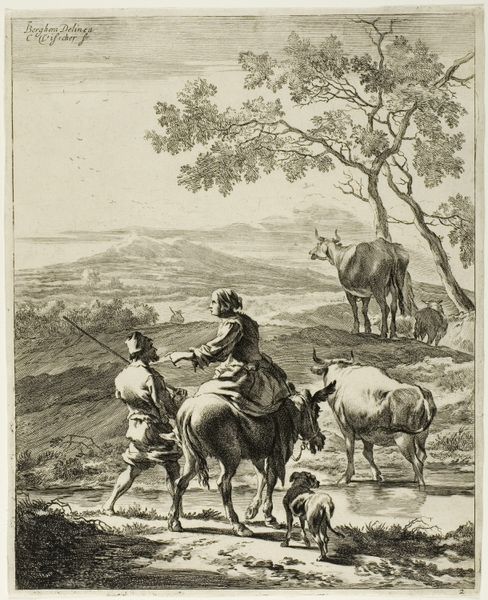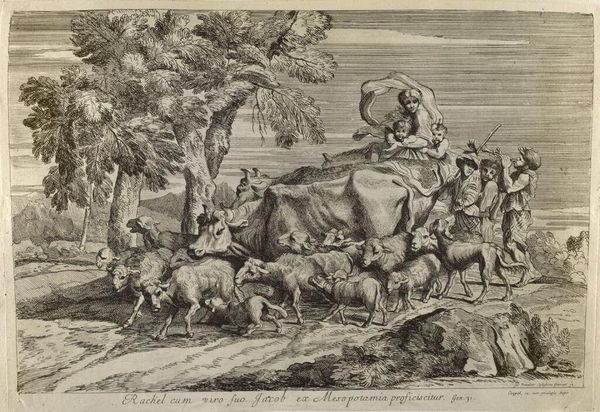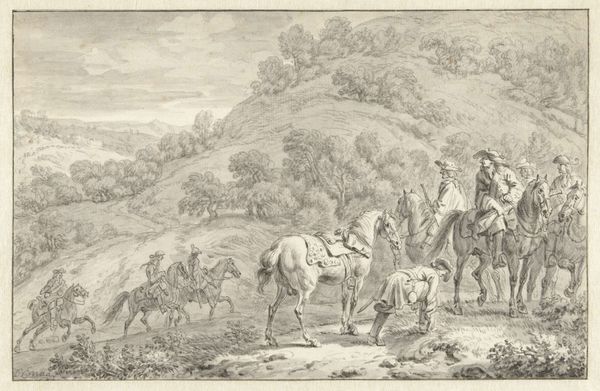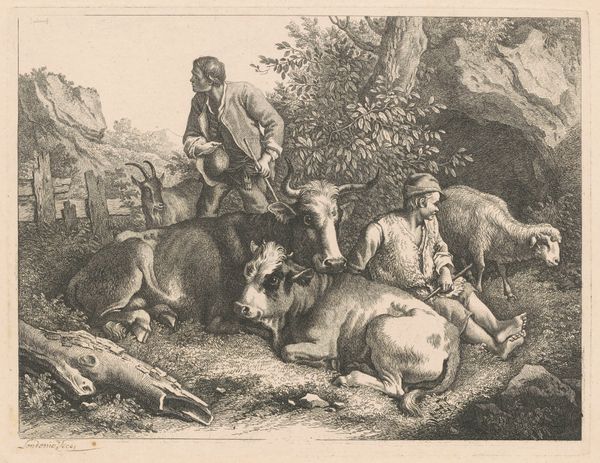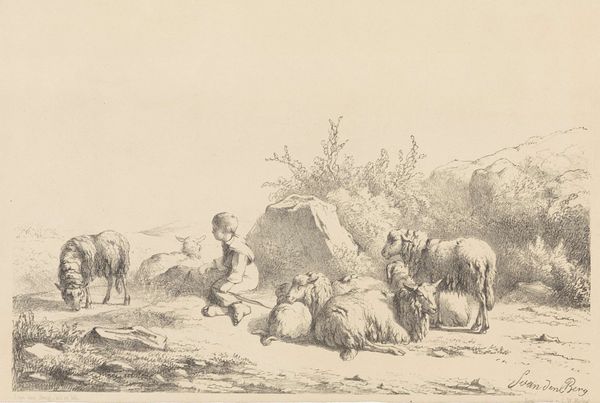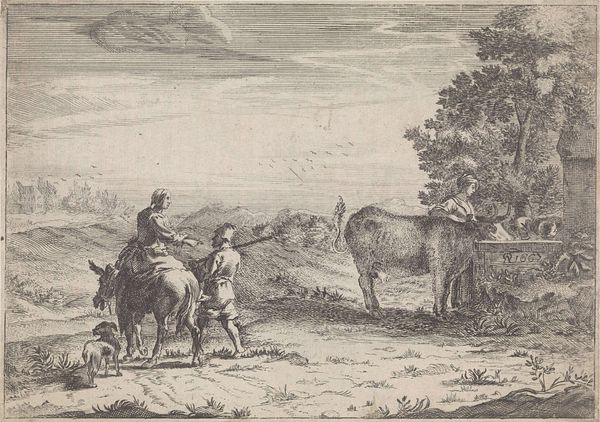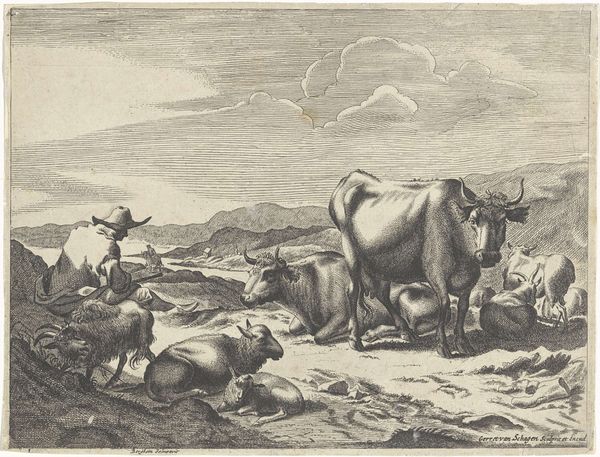
drawing, print, ink, engraving
#
drawing
#
baroque
# print
#
pen sketch
#
landscape
#
figuration
#
ink
#
genre-painting
#
engraving
Dimensions: height 199 mm, width 299 mm
Copyright: Rijks Museum: Open Domain
Curator: This engraving by Jan Baptist de Wael from 1658 is titled "The Prodigal Son as a Swineherd." My immediate impression is one of desolate tranquility, despite the somewhat tattered state of the main figure. The delicate lines create a sense of vastness within a small space. Editor: The choice of subject matter situates it within a long tradition of biblical narratives used to explore themes of repentance, forgiveness, and social commentary. The Prodigal Son story resonates powerfully with those who feel marginalized, offering hope for redemption regardless of past actions. De Wael’s visual vocabulary here speaks directly to systems of faith. Curator: Agreed, though the technique itself is remarkable. Notice the artist's masterful use of hatching and cross-hatching to create tonal variations, giving depth and volume to the figures and landscape. The rendering of the animals, particularly the textures of their coats, showcases his observational skills. Also, consider the formal device of positioning the son off-center. Editor: Yes, and if we dig a bit deeper, we might think about why this narrative was relevant in 17th-century Antwerp. De Wael, working during a period of intense social stratification and religious upheaval, used this image to provoke questions about wealth, poverty, and societal reintegration. How does the depiction of the son’s destitution function within a visual economy increasingly dominated by images of opulent materialism? Curator: An interesting counterpoint. From my vantage, though, I’m drawn to the spatial arrangement – how the foreground leads the eye towards the distant landscape with that peculiar building. The interplay of light and shadow creates an inviting rhythm across the composition. Note too, the figure gazes upward; it reinforces a directional line, a semiotic trace for an eventual divine redemption. Editor: Well, in some respects, the gaze is not only upwards but inwards, toward that painful and self-conscious moment of reflection that one can consider integral to reformation. The details surrounding the son--his dilapidated clothes and posture--communicate a stark reality of human frailty in times of deprivation. These would have created a visceral connection with many viewers familiar with social inequity during the artist's lifetime. Curator: The work truly presents us with many possibilities, doesn't it? Editor: It certainly does, a reflection on a distant past that helps us interrogate the systems that govern our present.
Comments
No comments
Be the first to comment and join the conversation on the ultimate creative platform.
